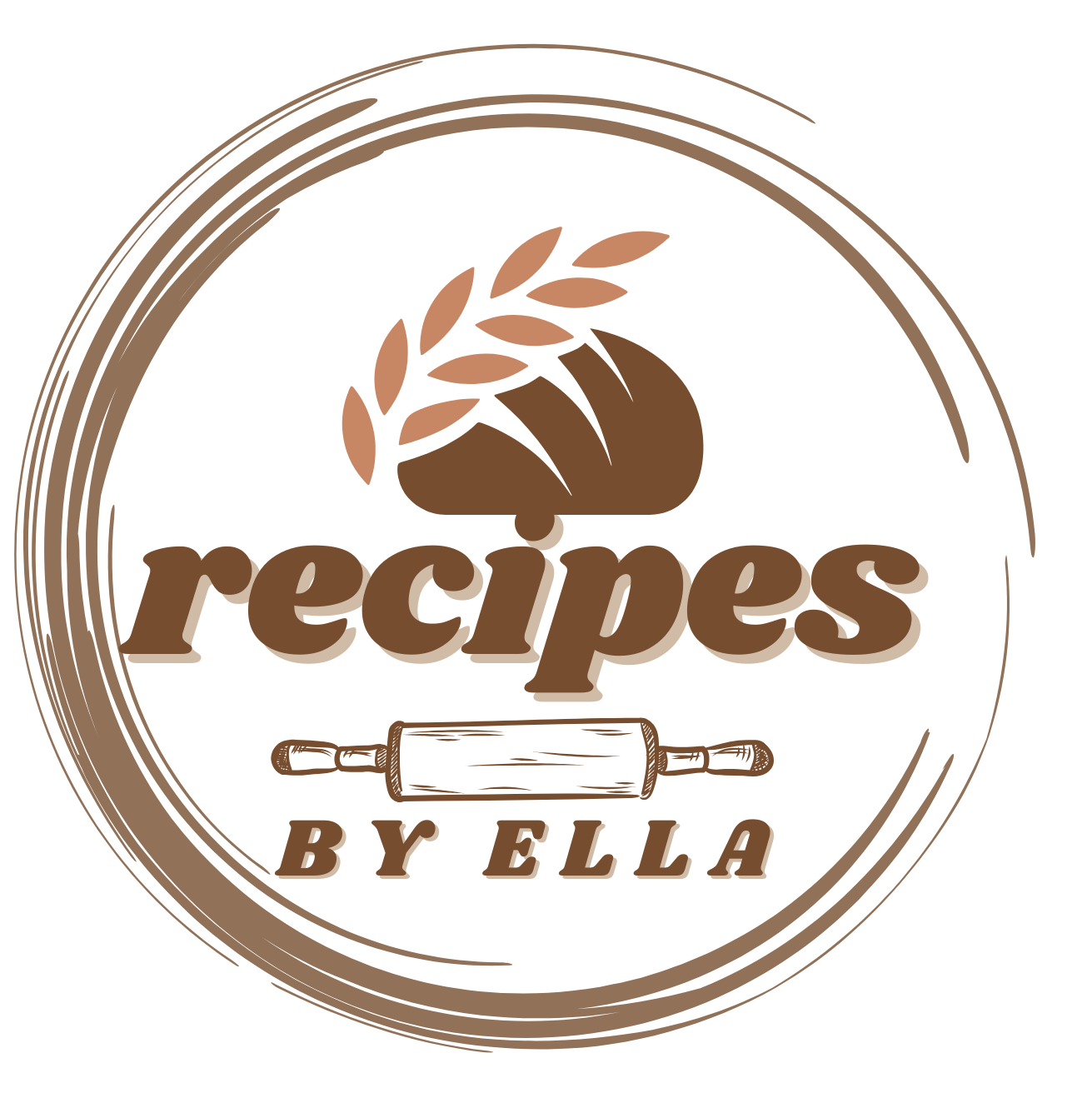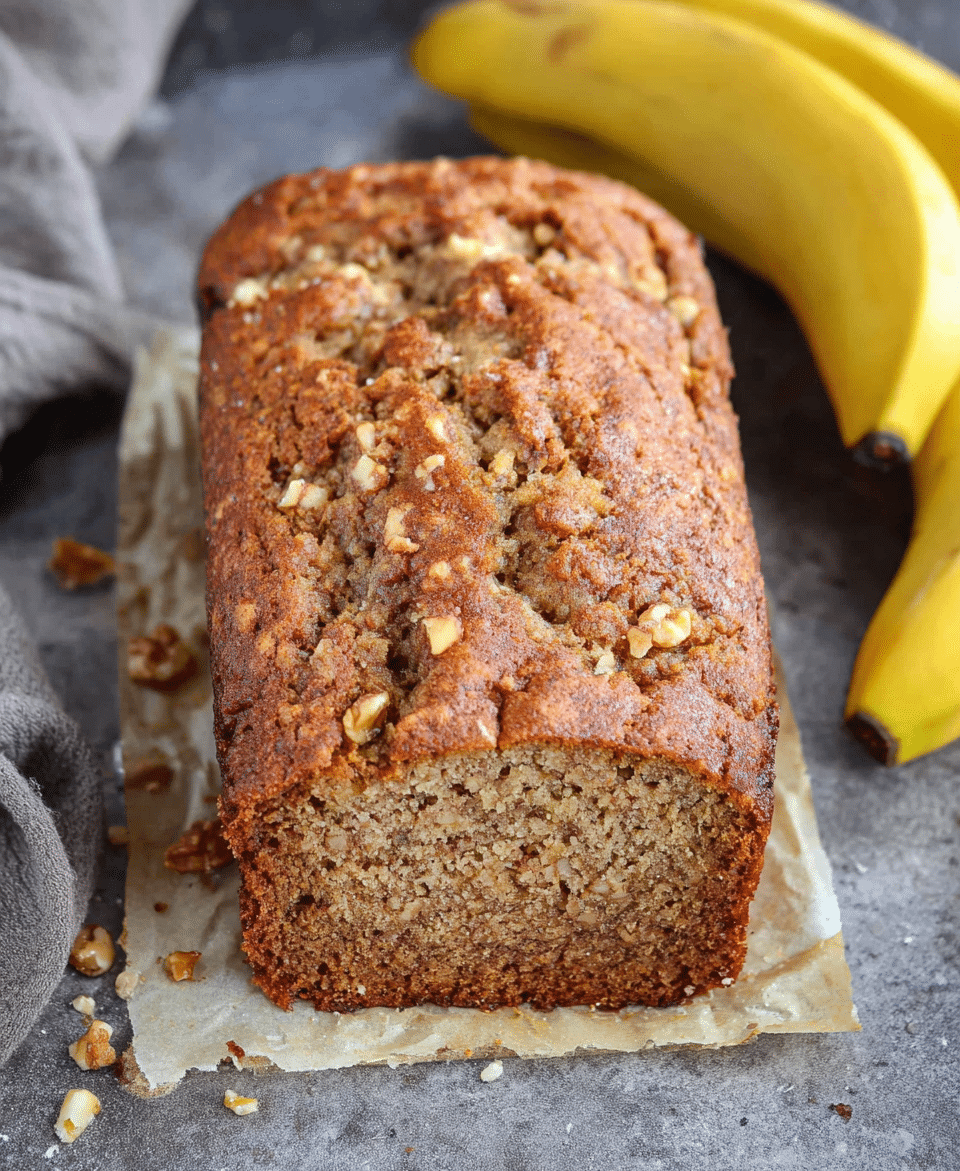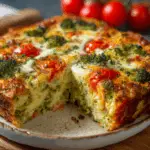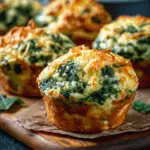This Starbucks Copycat Banana Bread recipe brings the iconic loaf right to your kitchen. With a moist, dense texture and rich banana flavor, it’s studded with crunchy walnuts that make each slice extra special. The batter is intentionally thick, and the slow baking process ensures a tender, golden crust with a soft inside. Whether for breakfast, a midday snack, or paired with coffee, this homemade version is sure to fill your kitchen with comforting nostalgia. Enjoy it warm with butter or cream cheese for the ultimate treat.
Ingredients
-
2 cups all-purpose flour
-
1 teaspoon baking soda
-
¼ teaspoon salt
-
½ teaspoon cinnamon
-
1 large egg
-
1⅛ cups granulated sugar
-
½ cup vegetable oil
-
2 tablespoons buttermilk (or milk)
-
1 teaspoon vanilla extract
-
3 extra-ripe bananas, mashed
-
½ cup chopped walnuts (plus extra for top, optional)
Directions
-
Preheat the oven to 325°F. Grease an 8×4″ (or 9×5″) loaf pan and optionally line it with parchment paper.
-
In a medium bowl, whisk together the flour, baking soda, salt, and cinnamon until combined.
-
In another bowl, whisk together the egg, sugar, and oil until smooth. Stir in the vanilla extract and buttermilk.
-
Gradually mix the wet ingredients into the dry ingredients — the batter will be thick.
-
Gently fold in the mashed bananas and stir until just combined.
-
Fold in half of the walnuts (if using).
-
Pour the batter into the prepared pan and top with the remaining walnuts.
-
Bake for 60–75 minutes, or until a toothpick inserted in the center comes out clean. If using a larger pan, start checking around 55 minutes.
-
Cool in the pan for about 20 minutes, then transfer to a wire rack to cool completely before slicing.
Nutrients (per slice, serves 8)
-
Calories: ~443 kcal
-
Carbohydrates: ~63 g
-
Fat: ~20 g
-
Protein: ~6 g
-
Saturated Fat: ~2 g
-
Cholesterol: ~23 mg
-
Sodium: ~241 mg
-
Fiber: ~3 g
-
Sugar: ~34 g
Why Make a Starbucks Copycat Banana Bread?
If you’ve ever been to Starbucks and grabbed a slice of their banana bread, you know just how comforting it is. It’s perfectly moist, full of banana flavor, and often enhanced with the addition of crunchy walnuts. But as delightful as it is to purchase a slice with your coffee, there’s something uniquely satisfying about making this delicious treat in your own kitchen. Not only do you get to enjoy a fresh slice whenever you want, but you also have the opportunity to tweak the recipe to your personal preferences.
One of the key reasons to opt for a copycat version is control. You can experiment with different add-ins, adjust the sweetness to suit your tastes, or even try healthier alternatives (such as replacing vegetable oil with coconut oil, or using honey in place of sugar). Plus, there’s the added benefit of knowing exactly what goes into your loaf, allowing you to ensure that you’re using the finest ingredients available.
The Science Behind Banana Bread
Banana bread’s signature dense, moist texture comes from the perfect balance of ingredients and the baking process. The key to banana bread’s texture is the flour-to-liquid ratio, which ensures that the bread doesn’t become too heavy or too light. The mashed bananas in the recipe provide moisture and contribute to the rich banana flavor, which is further intensified by the spices and other flavorings. The slow baking process at a lower temperature helps create that golden crust while allowing the interior to stay soft and tender.
Additionally, baking soda is an essential ingredient in banana bread recipes because it works as a leavening agent. It reacts with the acid in the mashed bananas (as well as any other acidic ingredients like buttermilk) to create bubbles that help the bread rise. However, unlike yeast-based bread, banana bread doesn’t require any kneading, making it a much simpler and quicker option for home bakers.
How to Make the Perfect Starbucks Copycat Banana Bread
To achieve that bakery-quality banana bread at home, you’ll want to focus on using ripe bananas. The riper the banana, the sweeter and more flavorful your bread will be. Overripe bananas, often with spots or even completely brown skins, are the best option. In fact, they may be the most important ingredient in achieving the moist texture and rich flavor you’re craving.
Once you have your ripe bananas, the key to success is mixing the ingredients properly. It’s important to whisk the dry ingredients (flour, baking soda, cinnamon, and salt) in one bowl and the wet ingredients (egg, sugar, oil, vanilla extract, buttermilk) in another. This helps ensure that the leavening agents and spices are evenly distributed before they are incorporated into the wet mixture. Once the wet and dry ingredients are combined, gently fold in the mashed bananas and walnuts (if desired). This prevents overmixing, which can lead to a denser loaf.
Baking banana bread at the right temperature is also crucial. The loaf should bake at a relatively low temperature of 325°F, allowing it to cook through evenly without burning on the outside. You’ll want to check for doneness by inserting a toothpick into the center of the loaf — it should come out clean when the bread is fully baked. However, baking times may vary depending on the size and type of pan used, so it’s important to start checking the bread a few minutes earlier if you’re using a larger pan.
Add-Ins and Variations
One of the best parts of banana bread is the freedom it allows in terms of customization. While the classic Starbucks banana bread includes walnuts, you can easily swap them out for other mix-ins depending on your preferences. For instance, chocolate chips, dried fruit, or even a swirl of peanut butter can add an extra layer of flavor and texture to the bread.
If you prefer a vegan or dairy-free option, it’s easy to modify the recipe to suit your dietary needs. You can substitute the egg with a flax egg or an egg replacement, use a non-dairy milk (such as almond or oat milk), and swap the vegetable oil for a plant-based oil like coconut oil. Additionally, you can replace the granulated sugar with maple syrup or coconut sugar for a more natural, less refined sweetness.
For those who enjoy a little extra spice in their banana bread, consider adding a pinch of nutmeg or ginger to complement the cinnamon. These spices enhance the flavor profile and elevate the banana bread to new heights.
Storage and Serving Tips
Banana bread is one of those baked goods that gets even better after a day or two. This is because the flavors have time to develop and meld together, and the moisture from the bananas soaks into the bread, making it even more delicious. After baking, allow the bread to cool completely before storing it in an airtight container to keep it fresh. If you’re not planning to eat it all in a few days, you can also freeze slices of banana bread for up to three months.
To reheat the banana bread, simply place a slice in the microwave for about 15-20 seconds or toast it lightly in a toaster oven. Serve with a pat of butter, cream cheese, or a dollop of Nutella for a satisfying snack or breakfast.
Conclusion
The Starbucks Copycat Banana Bread recipe is more than just a copy of a popular cafe treat — it’s an opportunity to enjoy a homemade, comforting classic that brings nostalgia and joy into your kitchen. By using simple ingredients and following a few key techniques, you can recreate the dense, moist loaf with rich banana flavor and crunchy walnuts that Starbucks is known for. Whether you’re baking for yourself, your family, or friends, this banana bread is a sure way to spread warmth and happiness. So, the next time you have overripe bananas sitting on your counter, you’ll know exactly what to do: bake the perfect loaf of banana bread and enjoy every bite!






